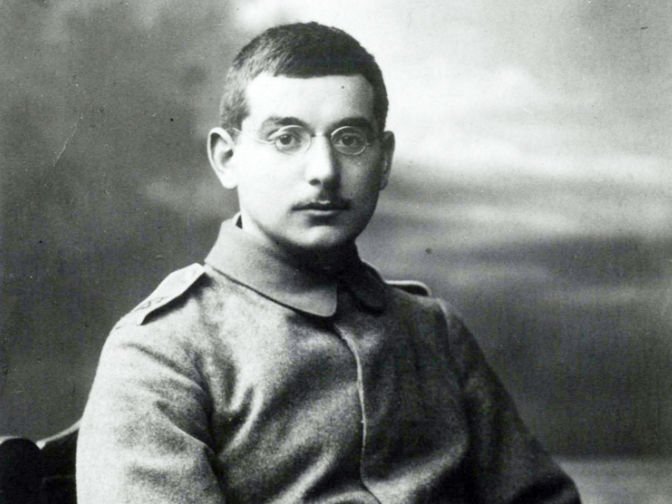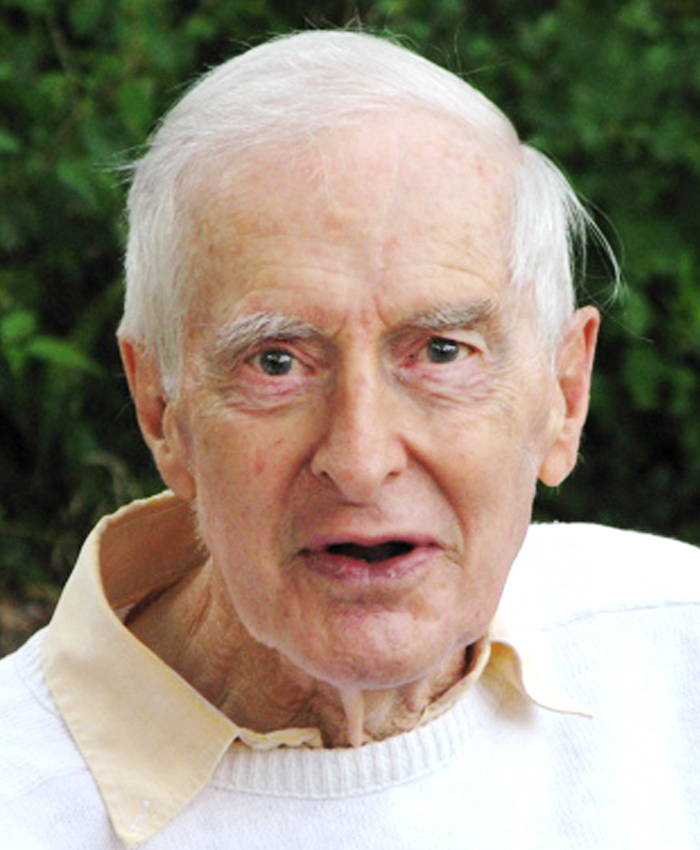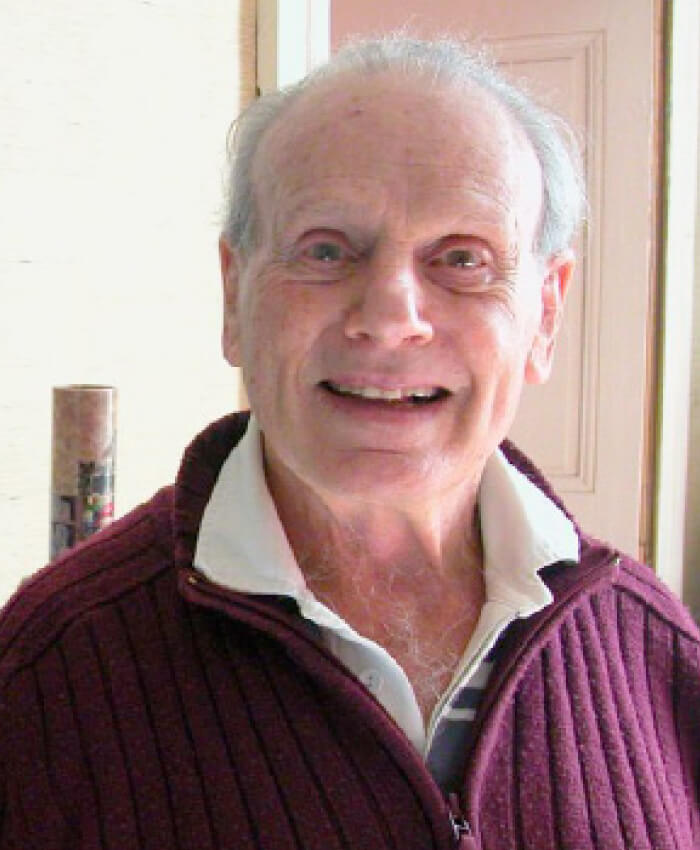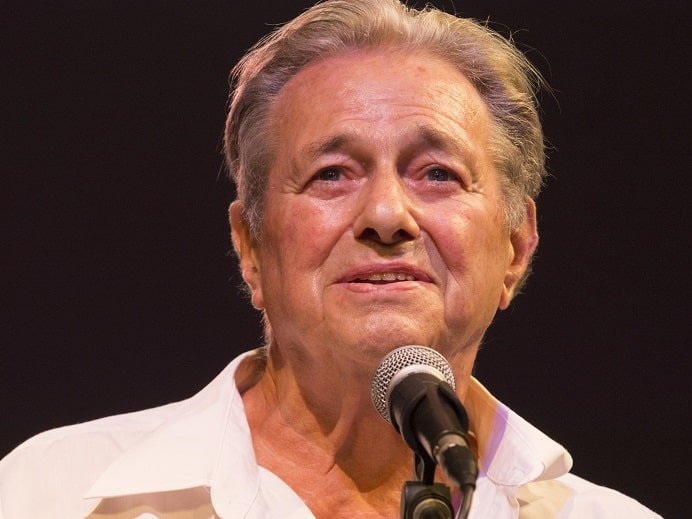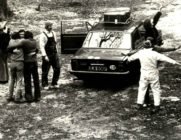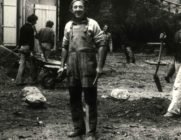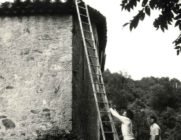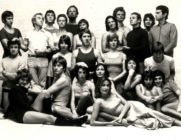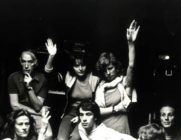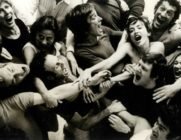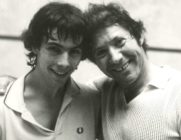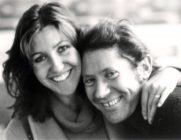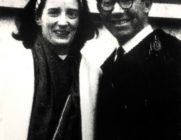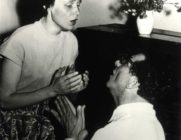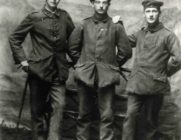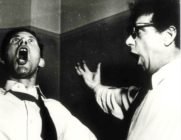Alfred Wolfsohn
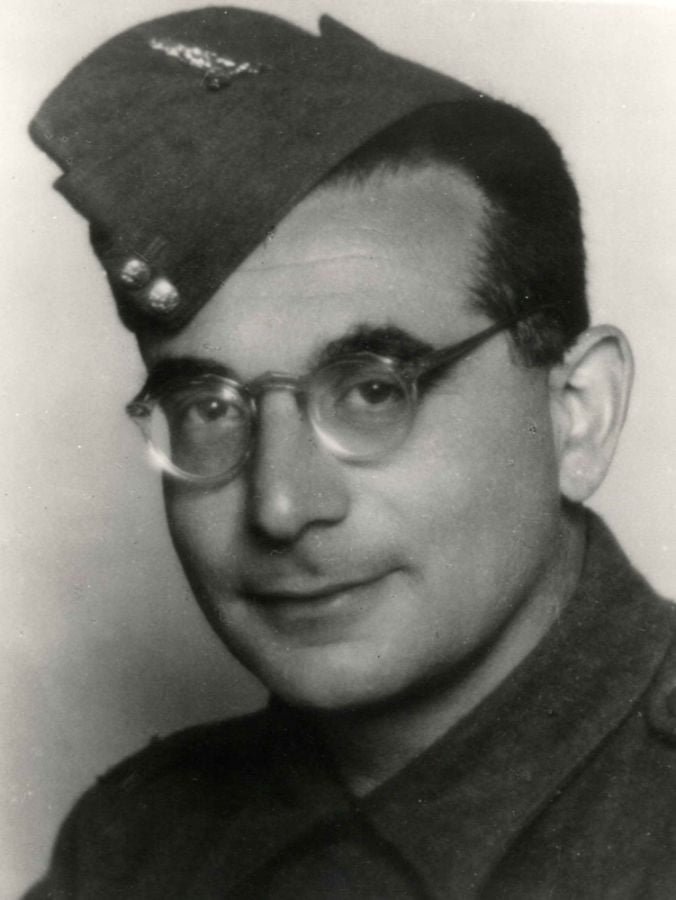
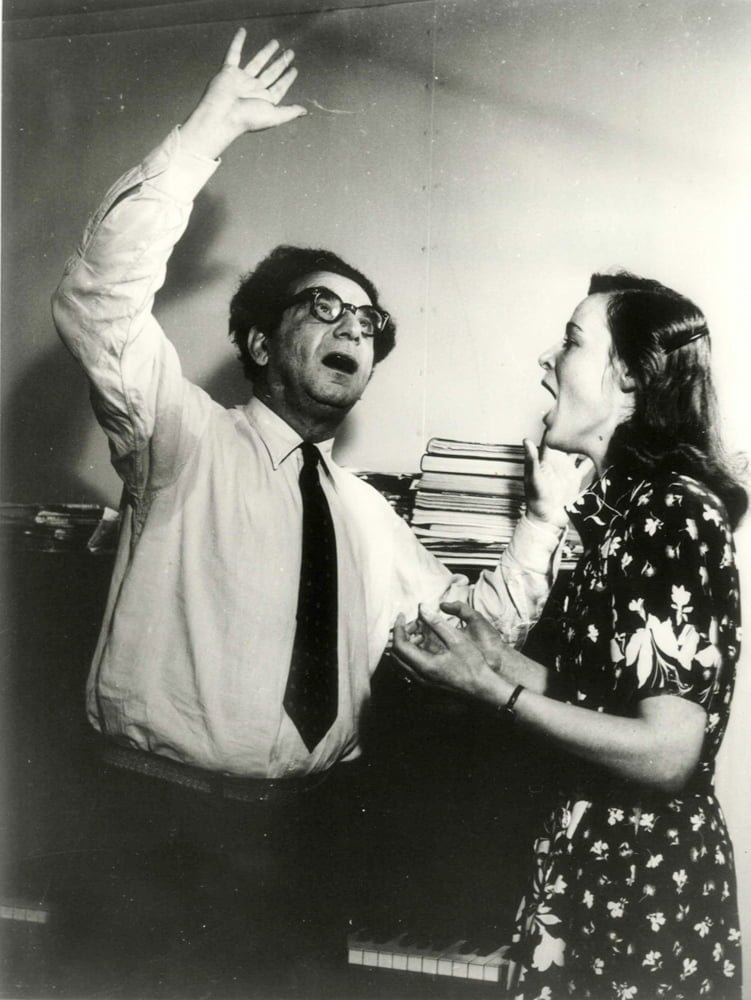
Alfred Wolfsohn was born in Berlin in September 1896, into a German-Jewish family. As a young conscript he fought in the trenches and was wounded during a night bombing raid. Picked up the next day on the battlefield by a group of stretcher-bearers who presumed him to be dead,when he woke up Alfred had to extricate himself from a pile of corpses among which he was buried.
When he left the military hospital in 1919 he was still physically and mentally shattered. There were no treatments which helped, and he experienced auditory hallucinations: he still heard the agonised cries for help of an injured soldier who lay just yards away from him during the night which had almost cost Alfred his life. He was also haunted by the guilt of not having known how to get help to this man.
For the next 10 years he tried to combat this precarious state of health, most notably by the many works of art he produced during a trip to Italy. Recalling the emotional pleasure he’d felt whilst singing as a child, Alfred Wolfsohn instinctively knew that singing could help him in his journey back to a sense of self and in giving purpose to his life. He took singing lessons with several teachers without finding what he was looking for.
And so he began his own vocal research into what he called “the human voice”: a voice which would be able to express a vaste range of notes and textures, which would surpass the usual constructs of the male or female range, and convey all human emotions. He set himself up as a singing teacher and got good results, especially with several classical singers who had lost their voice. As he worked with these students, he quickly realised that their vocal problems were always linked to some psychological trauma, and that the way he worked with them improved both their vocal performance and psychological well-being. He became passionate about psychology and philosophy and saw many parallels between his experimental teaching and the writings of Carl Jung.
The anti-Jewish persecution linked to the rise of Naziism, which made it increasingly difficult for him to work, led him to flee Berlin in 1939. Arriving in England he volunteered for service with a branch of the British army. At the end of the war he continued his voice research in London. In the 1950s his work came to the attention of several organisations: the BBC made a documentary about him; his most brilliant student, Jenny Johnson, gave a concert in The Royal Festival Hall, which attracted high critical acclaim; and a recording of his teaching was sold by a US record company.
When ill-health caught up with Wolfsohn, one of his most promising pupils, Roy Hart, decided to continue the vocal research. Wolfsohn died of a lung infection in 1962.
Wolfsohn published the manuscripts (“Orpheus, oder der Weg zu einer Maske”
Germany 1936–1938, and “Die Brucke” London 1947 ) and had an enormous influence on the artist Charlotte Salomon, appearing many times in her work “Life? Or Theatre?” under the pseudonym Amadeus Daberlohn.
Paul Silber‘s website contains additional articles and resources about Wolfsohn and Roy Hart.
Charlotte Salomon
Charlotte Salomon was born into a Jewish family in Berlin in 1917. At the age of nine she lost her mother and four years later her father was remarried, this time to the famous singer Paula Lindberg.
In 1935 she gets a place at the National Academy of Art, where she is the only Jew in the class. She meets her step-mother’s singing teacher Alfred Wolfsohn, whose philosophy and thoughts on life and art make a great impression on her.
After Kristallnacht the situation for Jews becomes unbearable, and at the beginning of 1939 she’s sent by her father to stay with her grandparents; they had moved to the south of France and were living in a house belonging to a rich American.
In September 1939 her depressed grandmother attempts suicide. While she is being revived, Charlotte’s grandfather tells Charlotte that, contrary to what she has been led to believe, her own mother didn’t die of flu, but by her own hand. And that this suicide followed a long line of others. On her mother’s side of the family, six others had killed themselves. Charlotte is devastated. A few weeks later her grandmother succeeds in committing suicide.
In 1940 she suffers another trauma. Along with her grandfather she is sent to the internment camp at Gurs in the Pyrenees. They are released after 6 weeks because of her grandfather’s ill health, on condition that she looks after him. Back on the Côte d’Azur Charlotte falls into a deep depression. She recalls however her conversations with Alfred Wolfsohn in which he encouraged her to surrender herself, body and soul, to her art. She makes a decision to conquer the familial suicidal urges which she is aware of in herself, by creating something ‘really crazy and strange’. In just eighteen months she produces 1325 gouache paintings.
In 1942 her oeuvre is complete: she selects 769 of her paintings to create ‘Life? or Theatre?’. It’s a complex pictorial work which stunningly weaves text and graphics, in places referencing musical works. This autobiographical work is designed like a 3-part fresco: the prelude represents her childhood; the main section is dedicated to Wolfsohn – who she renames ‘Amadeus Daberlohn’ – and to his theories and her relationship with him; the epilogue focuses on her life in France, and on her determination to transform her life-story into a work of art, a book which would ‘deal with the primary truths’. Charlotte puts all her paintings into two large parcels which she gives to her doctor: she tells him to ‘Keep them. They’re my whole life’.
In February 1943 her grandfather dies. In June she marries an Austrian refugee Alexander Nagler. When in September the Germans take over from the Italians’ presence on the Côte d’Azur, the intimidation intensifies. On September 21st Charlotte and Alexander are arrested near Nice and deported to Auschwitz. Five months pregnant and 26 years old, Charlotte is sent to the gas chamber on October 10th, 1943. Alexander dies of exhaustion on January 1st, 1944.
Charlotte didn’t escape the Nazis but she succeeded in her resolution: by her art she avoided suicide and transformed the tragedy of her destiny into an artistic and human masterpiece which is today recognised around the world by public and critics alike.
The first exhibition of her work was in Amsterdam in 1961: and it was via an invitation to that exhibition that Wolfsohn learnt of the enormous influence he had on her. The great irony of history is that, although Charlotte integrated much of his philosophy and teachings into her art, quoting him and even painting him hundreds of times under the pseudonym Amadeus Daberlohn, Wolfsohn died in 1962 having never seen ‘Life? or Theatre?’.
In 1971 Charlotte Salomon’s artwork was donated to the Jewish Historical Museum in Amsterdam (The Charlotte Salomon Foundation). The Museum is responsible for educating the public about her work via books, cd’s and exhibitions which tour throughout the world. http://www.jhm.nl/english
In France the writer David Foenkinos has helped to bring her life and art to the public’s attention via his book, ‘Charlotte’ (2014), which was awarded the Renaudot Prize and the Goncourt Student Prize for Literature.
To find out more about Charlotte Salomon, please visit the Roy Hart Archives on the site run by Paul Silber (where you will also find articles, and books/ cd’s and dvd’s for sale) www.roy-hart.com
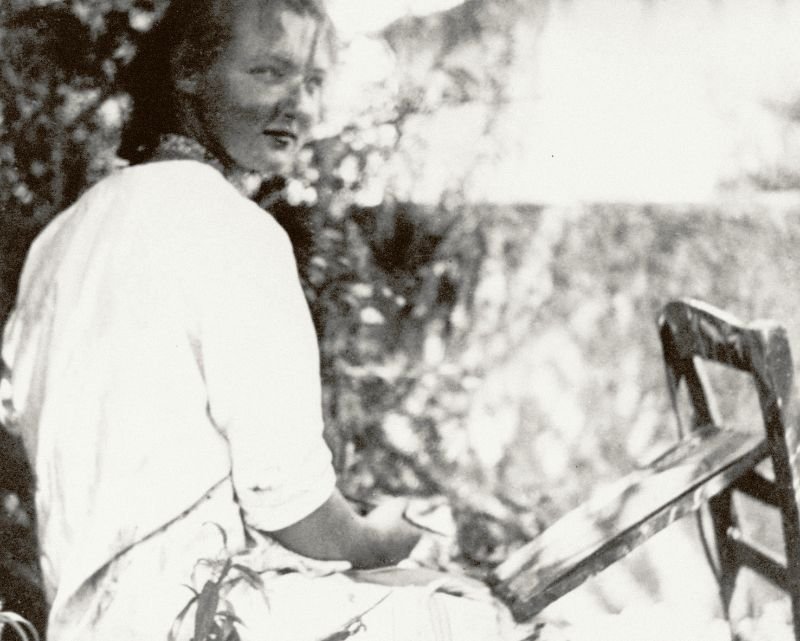
Roy Hart
Roy Hart was born in Johannesburg, South Africa in 1926. He studied psychology and English at Witwatersrand University where he emerged as a gifted actor, and gained a scholarship to the Royal Academy of Dramatic Art in London. At R.A.D.A. he was a successful student yet he felt, “that the characters I performed so convincingly were merely figments of my imagination . . . something was lacking”. His chance meeting with Alfred Wolfsohn was decisive and he abandonned a promising career in the ‘West End’ theatre to study with Wolfsohn. In search of that ‘something lacking’ he did not perform in public for the next seventeen years.
He emerged in 1969 to a period of intense international artistic and psycho-therapeutic activity: solo performances in Henzes’ “Versuch über Schweine”, Maxwell-Davies’ “Eight Songs for a Mad King” and Stockhausen’s “Spiral”; and Euripides’ “Bacchae” performed with his own company. He was guest speaker at psycho-therapeutic and theatre congresses throughout the world: Jerzy Grotowski, Peter Brook and Auther Koestler all came to speak with him in his studio in London.
In 1972, he began to perform as an actor with his own company which by that time had grown to more than forty members. The Roy Hart Theatre company took up residence at Malérargues in the south of France in 1974.
Roy Hart died in a car accident while on tour in May 1975. His wife, Dorothy, and friend Vivienne Young died with him.
They are buried at Malérargues.
If you are interested in researching the legacy of Roy Hart more in depth, please have a look at the Roy Hart Theatre Archives Website, hosted and maintained by Paul Silber.
www.roy-hart.com
Photo © Ivan Midderigh
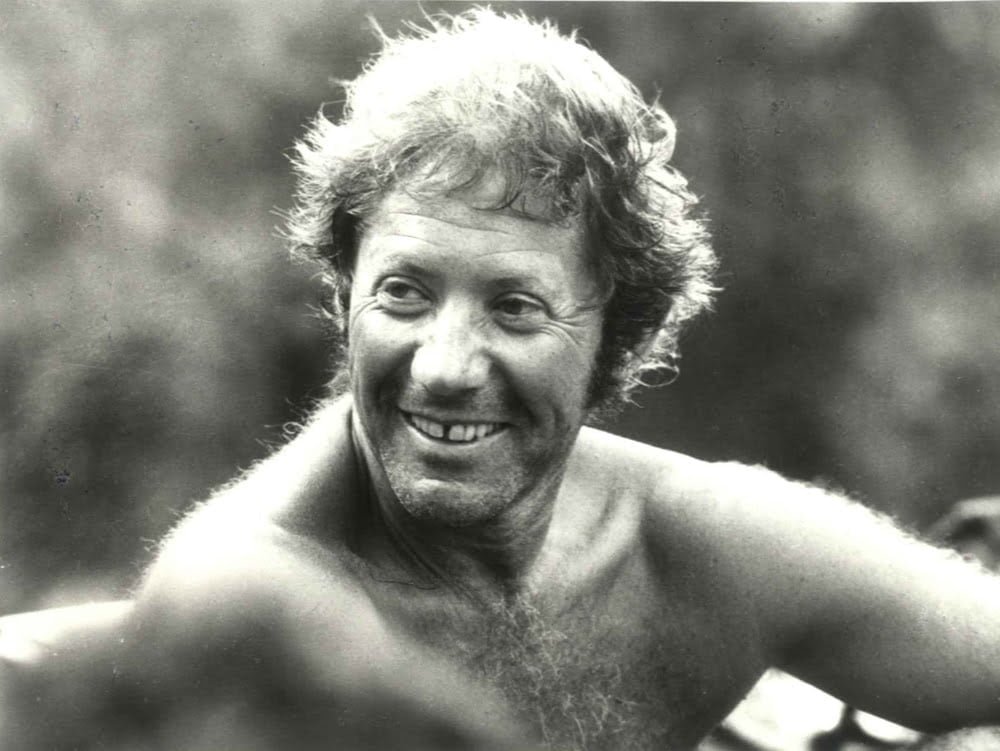
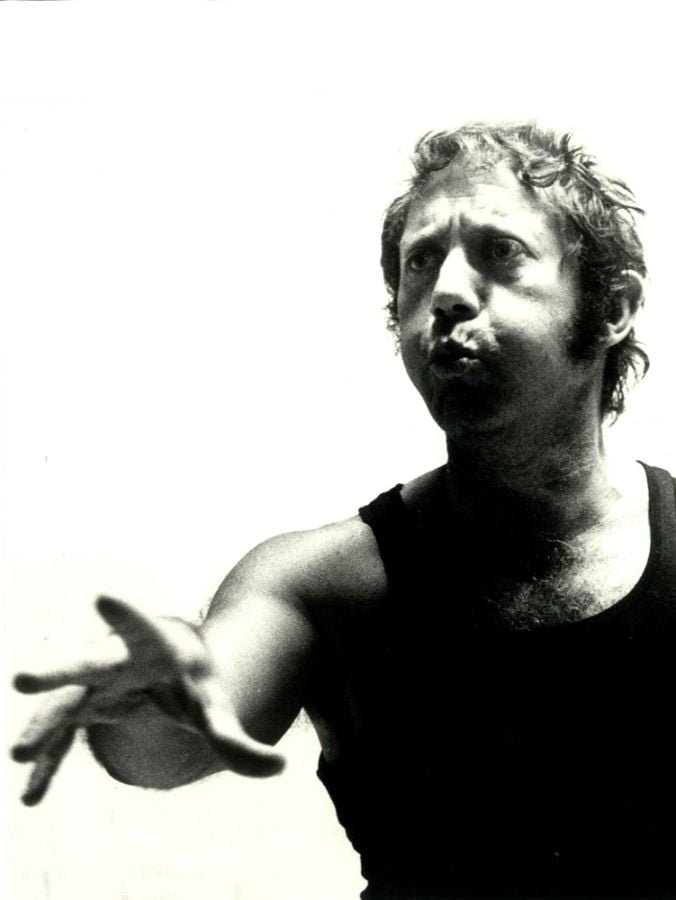
Dorothy Hart
Dorothy Hart by Linda Wise
Dorothy Findlay was born in Kenya on 8th may 1926, the fourth and last of the four daughters of Constance and Hugh Findlay. She was one of the third generation of white “settlers” in Kenya – then part of British Colonial East Africa. Like many of the children born in the British colonies she was sent back ‘home’ to Britain at four years old to be educated. Dorothy lived with her widowed grandmother and three sisters in Peaslake, Surrey. Her parents visited the children every four years, and meanwhile the daughters were placed in boarding schools, either spending their holidays with their grandmother or with their cousins in the West of Scotland. The Findlay family was also a clan and it is not unusual to see photos of all the sisters dressed in the Farqhuason tartan on huge family picnics out on the Scottish moors.
Little Dot as she was called, was bursting with vitality – her closest friend seemed to be her sister Anne, the most quiet and reflective of all the sisters and the only blonde midst the dark-haired beauties. Dot was artistically gifted, especially for music, and notably intelligent. Vive d’esprit with a wildly adventurous spirit and curiosity. Somehow like all her sisters and her generation she managed to survive in a family situation that was far from homely. Granny Touche, her grandmother and my great grandmother, was an impressive and rather severe lady, with the sense of decorum and moral standards that were considered appropriate for her generation. BUT she was also a feminist who believed in fairness and the importance of education and independence for women.
Dorothy’s childhood lead into the 2nd World War. Her father, who she hardly knew, died of lung cancer and her elder sisters moved from school to join the war effort. Clearly her academic education managed to continue as she passed from school to Cambridge University… still a victory for all women in that era, who were labelled the ‘blue stockings’ the ambiguous and slightly disparaging appreciation for women academics. It was at Cambridge that she first met Chief Kidaha from Tanzania who later became the father of her son Jonathan. A love that changed the direction of her life.
I do not know when she returned to Africa but she was clearly there in the early 50s for my first memory of her must be when I was about three or four years old. She was living with her mother at Waitangi, the family Coffee Estate which her mother was running since the death of her husband. One day she appeared in the drawing room in full Spanish costume and danced to old 78 records of flamenco – playing the castanets and then running to sing at the piano. She was delightful and, to us children born ‘in the bush’, a flame of colour from another world. We thought she was beautiful and would hide in her bedroom to open the cupboards and look at those amazing ruffled flamenco dresses – which included three bridesmaids dresses (she had been the bridesmaid to each of her sisters) and one wedding dress.
Some 15 years later I re-discovered Dorothy – now mother of Jonathan and married to Roy Hart and living in London. Her vitality and warmth was the same but she had become someone else. Now she had a life’s work where her artistry could flourish. The first time I heard her sing I sobbed – intrinsically understanding the manifestation of a soul’s voice, wrenched and screaming with transparent and translucent beauty. I was not the only one – she often had this effect on the public. The first time she sang in the little church of Thoiras a deeply moved Cevenol farmer told her that when she sang he felt the same energy as when he was ploughing the fields!
When I wrote my thesis for the University of Glasgow, I discovered that in fact she was the author of all the papers attributed to Roy Hart. She was the mind that enabled him to put on paper his thinking, and very likely the musical coach for his solo work with contemporary composers. She was often the only opposition to Roy that dared to voice her view. She questioned, she provoked, she created, she protested and most of all defended each person always finding the ‘gold’ in the other. She really loved people. Her role was not only precious – it was essential as the community developed around Roy Hart. And in retrospect I feel that she must have really challenged him on deeply ethical issues.
Dorothy also merits recognition as the exceptional person and artist she became. I really feel her life was her art. She lived her life crossing boundaries, questioning norms. Never would I call her the woman behind or even beside Roy Hart – her spirit was too free for such a position, her mind too fine and her inner life too rich. She accompanied Roy Hart as his legal wife and precious companion – suffering not in silence, but screaming through the disintegration of their ‘couple’. She rose out of it not as a survivor, but as an emancipated woman to fall in love again and to live her life fully.
My last memory of her comes from a few days before she died. We were walking in the Spring of the Austrian mountains. A break on the final tour. She was quite simply full of joy – entranced by the beauty and the flowers beginning to burst out. I felt her deeply happy and was grateful to be able to tell this to my grandmother whose heart nearly broke with grief on hearing that she had died.
When I was asked to write something about Dorothy Hart for the Roy Hart Centre’s website, I did not hesitate. The hesitation came when I began to think about what could be relevant to say in this very specific context, an online website. In my view Dorothy Hart deserves a full biography in her own right… as the true “Singer” that she was. Dorothy died too early, leaving a challenging silence around her life. One day her full story will be told.
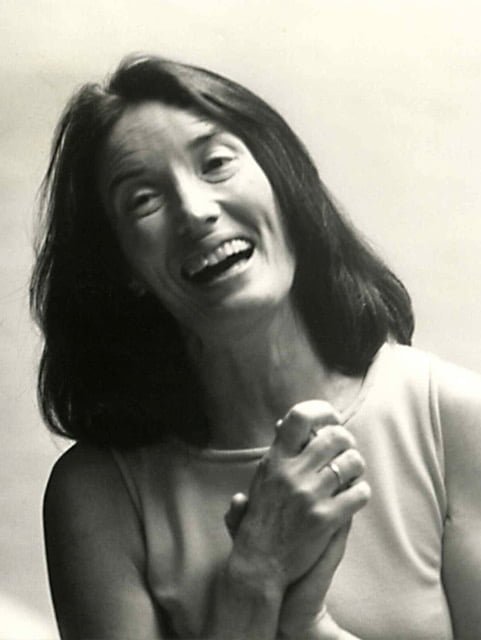
The Roy Hart Theatre
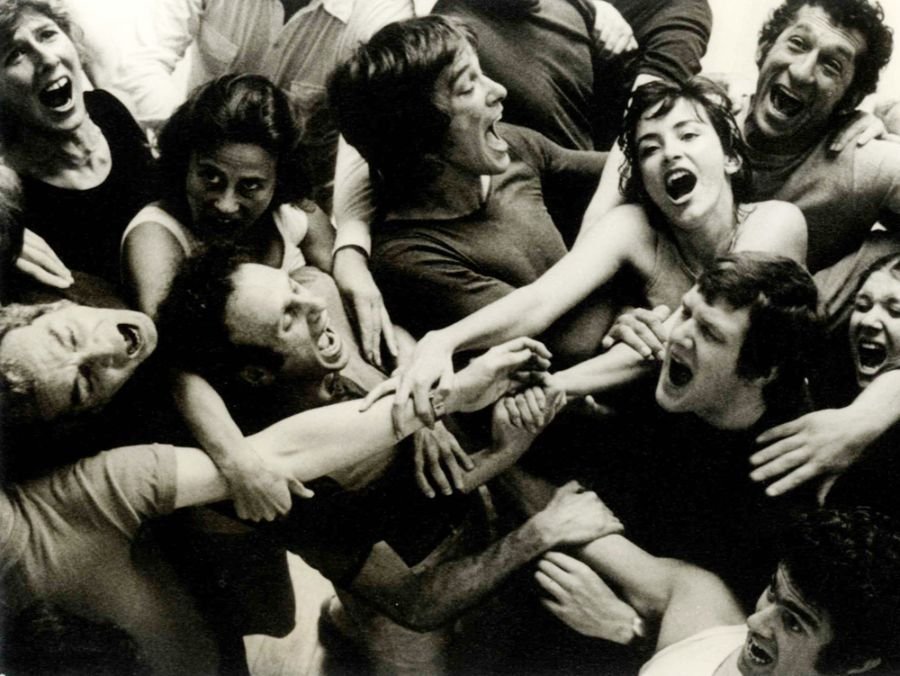
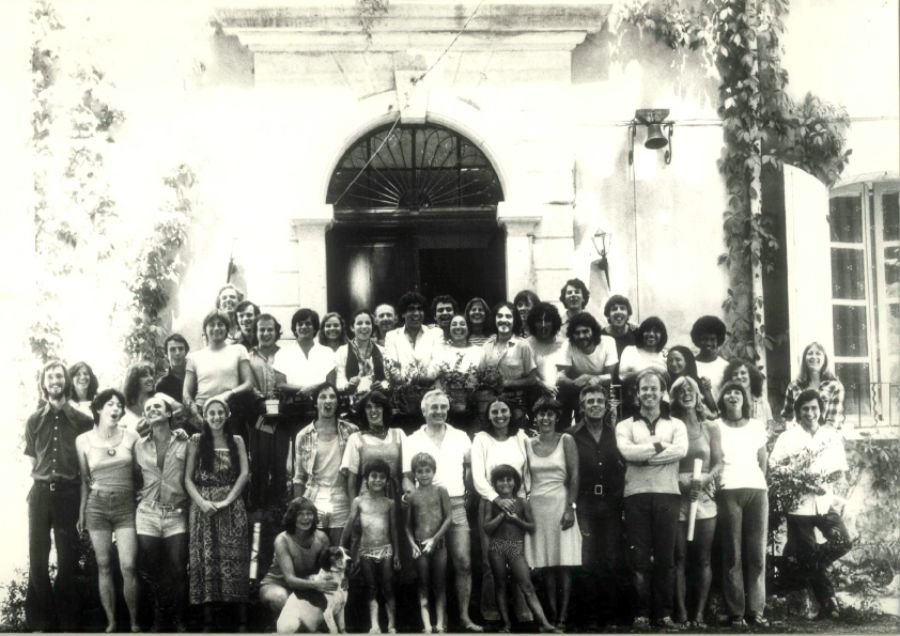
Roy Hart was an actor, so it was natural that he began to use theatre texts with the group that formed around him after Wolfsohn’s death – eventually working with the whole text of Euripides’ “The Bacchae“. He insisted that everyone learn the complete text by heart before rehearsals could begin. As well as rehearsals there were hours and hours of dream analysis and research into the universal and individual unconscious.
“Don’t pretend to be a crazed, blood-thirsty woman, find her in yourself and be her”. Two years later the result was three hours of psychic improvisation that could be played forwards, backwards, jumbled-up or in gibberish, and never the same twice. This production influenced Peter Brook to create his “Marat/Sade”. Jack Lang took it to the Nancy Festival in 1969. The first performance there only had a small audience and half of them left before the end. The second was half full and again half of them left. The third was full, the fourth and fifth were packed-out to the rafters – still half of them left. It was “The event of the festival” and a legend was born. The name came after. At the Round House in London The Bacchae, largely improvised and renamed ” The Front Eye” caused a sensation. Subtly directed by Roy from behind a mobile grand piano on cartwheels, it was a gigantic ‘singing lesson’, but after Roy declared that from then on the work would no-longer be ‘51% therapy, 49% art’ but the inverse, and the theatre was born.
A series of experimental performances were developed which crystalized into “And“, between therapy and art. ‘And’ was an investigation into ‘pre-verbal’ theatre, it was organised improvisation – physical, musical, wordless, and… successful. It ended with “The Magic Chord”, a gradual crescendo by the whole cast from a harmonic chord to screaming – screaming until they collapsed in a heap from exhaustion eight minutes later. But Roy wanted words, even if they were incomprehensible. His last performance with the theatre, “L’Économiste” was in French – too obscure for London.
Interest in the work was much greater in Europe, so the company moved themselves and the production to Malérargues. During its first tour (to Austria and Spain) Roy was killed in a car crash along with his wife, Dorothy and Vivienne. In great pain and economic distress, the company recreated L’Economiste in requiem. “La Tempête“, the first creation without Roy continued the tradition of big touring productions. Meanwhile smaller creations emerged from the personal inspiration of individuals: L’Enthousiasme, Enchanté, Dites-moi, Te Pardi!, Le Roi se Meurt, Pan, Pagliacci, Musiques pour Marsyas, Moby Dick and many more.
Great performances and no two alike. At this apogee of Roy Hart Theatre the company decided to no longer use the name and the Centre Artistique International Roy Hart came into being in 1991 as an umbrella for the whole family of individuals and tendencies. If you are interested in researching the legacy of the Roy Hart Theatre more in depth, please have a look at the Roy Hart Theatre Archives Website, hosted and maintained by Paul Silber. There you can also purchase books, CDs and DVDs.
www.roy-hart.com
Photo © Richard Bruston
Malérargues History
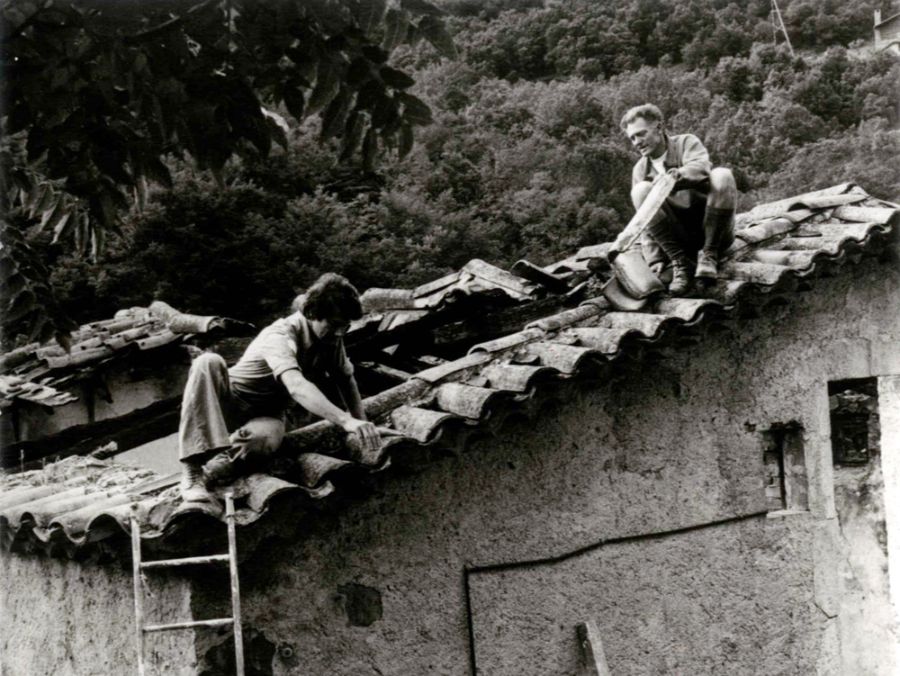

The Cévennes mountain region of southern France is renowned for its independence as evidenced by its resistance to the genocide of Louis XIV and the occupation of 3rd Reich. The Château de Malérargues has an exotic history bound up in these struggles and we like to think that in moving there in 1974 that the Roy Hart Theatre continued the tradition.
Le Château de Malérargues. We have turned a ruin into a beautiful place for learning, teaching and creation that welcomes students, educators, and the curious from all over the world, who come to find unique approaches to the voice, body, movement and psychology, which can be used not only in the field of performing arts but also in everyday life. The teaching is diverse, but always in the tradition of Roy Hart Theatre, based on the idea – first developed by the visionary, Alfred Wolfsohn and taken up by the actor Roy Hart in London that there is a profound connection between a person’s voice and their psyche.
Malérargues and the Cévennes were home to the Huguenot rebellion and to the protestant Camisards’ last stand against Louis XIV in the early 18th century. 2004 marked the 300th anniversary of the “Camisards War” and also the 30th anniversary of the buying and settling into Malérargues of the Roy Hart Theatre (1974.) This is not the only uncanny coincidence. Many Camisards fled to London where they created a sensation with their “Sacred Theatre” cults, especially with their inspired voices. They were dubbed “The French Prophets”. When the Roy Hart Theatre first performed in the Cévennes it was in local protestant temples with full-out “extended voices” gospel singing and a rumbustious rendering of Handel’s Hallelujah chorus. There was talk of “the return of the voice to the Cévennes” and even rumours of “The English Prophets”…
During the Second World War Malérargues became a training school for the Resistance movement. Robert Francisque served under Henri Meyrueis, the owner of Malérargues, in a campaign in Indo-China. Robert left the army to enter into the service of Meyrueis at the Château. Given his military background, Robert “le Noir”, as he was known, was able to train the young cadets. He became one of the leaders of the Maquis of Lasalle and took part in many sabotage activities. He also played a dangerous double game of joining the Milice. In 1944, he was betrayed and paid with his life: he was shot in front of the Château.
Malérargues 1974 During a period from July to March the following year 49 members of Roy Hart Theatre moved from London to Malérargues – in that same period 5 roofs collapsed there. With little money and sleeping 6 to a room, with 2 baths a week (in 2nd or 3rd-hand water) and chemical toilets, we worked on the buildings and created “L’Economiste”. In May, on its first tour, Roy and Dorothy and Vivienne, the three most important persons in our Theatre were killed in a car accident. As well as the huge personal, artistic and inspirational loss, their deaths had merciless financial implications. We wondered if we should not give up and return to London.
We decided to resist.
